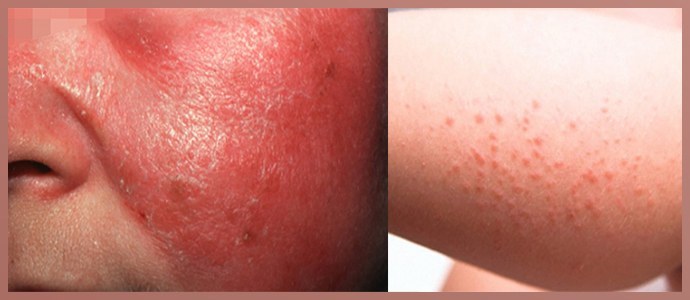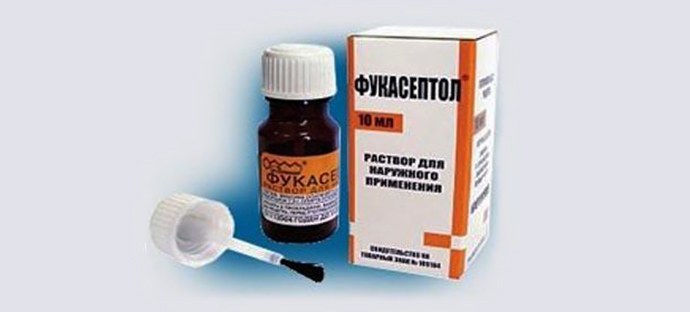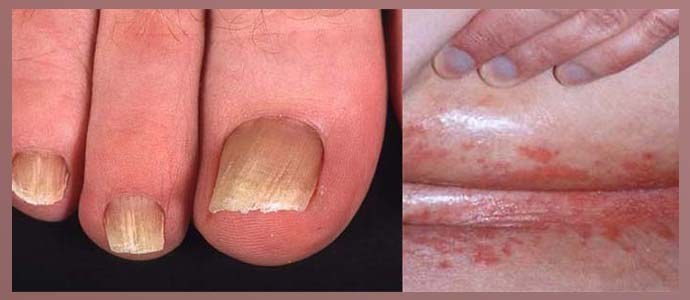Nail fungus in children: photos, treatment, advice from Dr. Komarovsky
Content
- How do children get infected?
- Toenail fungus
- Fungus of fingernails
- Forms and stages of the disease
- Diagnostics
- Treatment
- Traditional methods of treatment
- Are children of different ages treated the same way?
- Proper nutrition
- Prophylaxis
- Complications and consequences
- How to avoid relapses?
- What does Dr. Komarovsky say?
- Memo to parents
In childhood, fungal infections are much less common than in adults. According to statistics, onychomycosis affects 17% of patients aged 0 to 14 years. As a rule, chronic pathologies, injuries and a weakened immune system contribute to the development of the disease. Consider how nail fungus occurs in children and how to cure it.
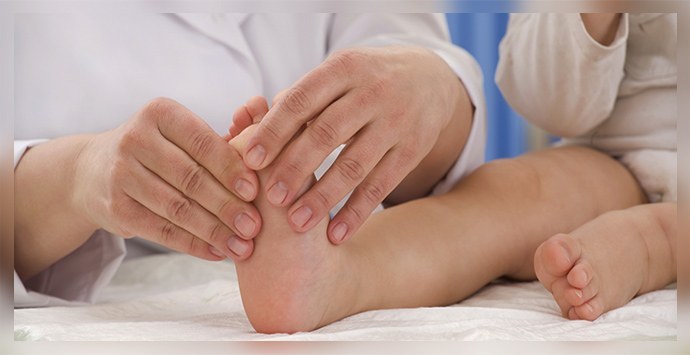
How do children get infected?
Mycotic infections at an early age have a more complex course than in adults. The child often complains of itching, burning and pain in the area of the lesion, which, in turn, swells and turns red. These symptoms require immediate medical attention, since there is a high likelihood of losing the nail. So how does infection happen?
The main cause of nail fungus is infection with onychomycosis pathogens. Children are at risk for this disease, since they are more often in a team with their peers, for example, in a kindergarten, sports section, school. Walking barefoot on the bare floor, close contact with other children, the presence of a sick person at home - all this leads to the intensive spread of mycosis.
According to the statistics of dermatovenerologic dispensaries, 80% of children are infected with nail fungus in the family. The remaining 20% of cases are caused by injuries to the plate and arose against the background of a child's attendance at preschool. The most common types of fungus in pediatrics are Trichophyton rubrum and Trichophyton mentagrophytes.
But catching an infection is not all, the pathological process develops against the background of the following favorable factors:
- a weakened immune system;
- poor nutrition;
- hypo- and avitaminosis;
- wearing uncomfortable shoes;
- flat feet.
It is difficult to protect a child from infection with a fungus, but it is within the power of every parent to notice the disease at an early stage in a timely manner and consult a doctor. In this case, the treatment will be simple and painless.
Toenail fungus
At the initial stage, it is not easy to notice onychomycosis on the legs. If the infection has occurred relatively recently, significant external changes in the structure of the nail plate will not occur. But at this time, the causative agents of the infection are already in full swing in its structure, trying to penetrate as deep as possible in search of better conditions for nutrition and reproduction.
Approximately 6 weeks after infection, with the active development of the disease, that is, the presence of favorable conditions, the nails begin to change as described in the table.
| Changes | Description |
|---|---|
| COLOUR | The plates lose their transparency and natural pink color. When infected with a fungus, they become dull, yellow, with spots of a white or gray tint. The stronger the pathological process, the darker the nail. |
| RELIEF | The surface of the plate becomes uneven, bumpy, and coarser. |
| STRUCTURE | It gradually loses its natural strength. Tissues begin to crumble, exfoliate, break. |
| CUTICLE | The skin around the nail becomes reddened and swollen, which indicates the presence of inflammatory processes in it. |
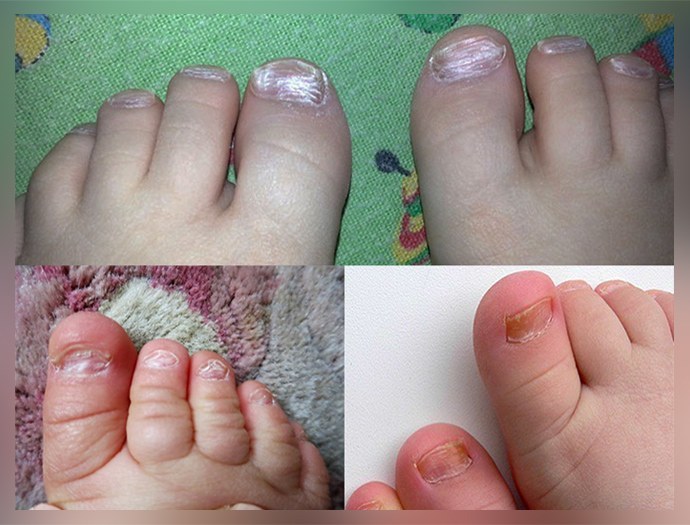
If there is no treatment, over time, the fungus completely deforms and destroys the plate. As a result, it flakes off, which, however, does not bring relief. The infection spreads to the skin and nearby nails, invading new territories.
Fungus of fingernails
Onychomycosis on the hands is much less common. Unlike the pathology localized on the legs, the nail plates do not undergo deep painful changes. Usually, the shape of the nail does not lose its original appearance, but its surface acquires some roughness.

In the absence of treatment and the addition of a secondary infection, rotting processes begin under it, sometimes hyperkeratosis forms. The color of the plates practically does not change, but spots of yellow and gray shades appear on them in the form of characteristic stripes.
Forms and stages of the disease
There are several forms of onychomycosis. Let's list them:
- Distal subungual. Most common. At an early stage, it is characterized by the appearance of a yellow spot on the affected plate, which tends to grow up to capture its entire area. If untreated, the nail easily peels off the cuticle.
- Surface white. The fungus affects only the stratum corneum. At the same time, it does not become thicker and rougher, the main symptom of the disease is a whitish unnatural plaque. Gradually, the nail begins to lose its elasticity, acquires a soft and pliable structure, and strongly exfoliates. This type of pathology is easily treated with medicines, especially when it comes to the early stage of onychomycosis.
- Proximal subungual. The infectious process initially concentrates near the cuticle, and then spreads to the entire area of the plate, staining it in a white matte color. The disease is quite rare, most often in people with HIV and AIDS.
- Total dystrophic. The most serious form of onychomycosis. It is characterized by local destruction of the nail plate and low efficiency of conservative action.
Fungal infection, like many diseases, proceeds in stages. It is characterized by the following stages of the pathological process:
- FIRST STEP. The nail loses its transparency, healthy appearance. Changes are also noted in its structural structure - the plate becomes thinner, begins to exfoliate, but its integrity and shape remain original.
- SECOND PHASE. Spots of various sizes and shades appear on the nails - from yellow to brown. The relief of the plate loses its usual smoothness and becomes thicker.
- THIRD STAGE. At the last final stage of the disease, the deformation of the nails reaches its peak. The structure is completely destroyed and begins to separate from the cuticle, the color becomes close to black, an unpleasant rotting smell emanates from the hands or feet. Secondary bacterial infections often join. Drug treatment at this stage is already powerless, you have to resort to more radical methods.
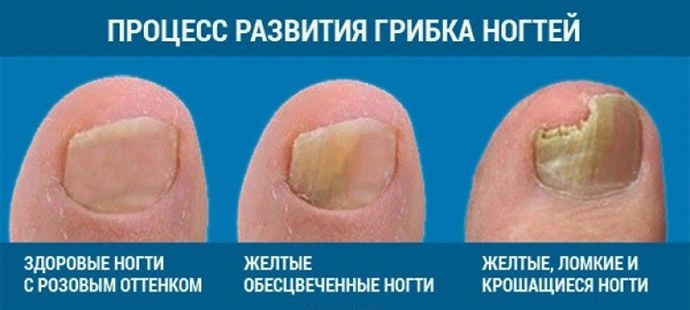
Diagnostics
If the first symptoms of mycosis on the hands or feet are detected, in particular, negative external changes in the child's nail plates, you need to show it to a specialist. During a visual examination, the doctor will confirm or deny the suspicions that have arisen, and send the baby for analysis.
A special laboratory study will help determine the specific causative agent of the infection, for this they take a small piece of the nail plate for diagnosis under a microscope. Based on the identified type of onychomycosis, the doctor selects the treatment.
Treatment
To combat nail fungus in a child, local medications are most often used. Usually, a specialist chooses the following means:
- sprays Mikostop, Mycosan - easy to use, easy to apply and absorb into the treated surface;
- varnishes Lamisil, Exoderil - with a single application per day have a prolonged effect, gradually accumulating in the tissues and providing a continuous therapeutic effect;
- ointments and creams Mycosan, Terbinafine - have a strong anti-inflammatory effect, actively fight the symptoms of the disease, and have a decent antifungal result.

Experts insist on a combined approach to the treatment of onychomycosis, that is, a simultaneous combination of oral and local drugs. Thus, in addition, the child is prescribed tablets for oral administration, which enhance the effect of external medications.
Usually, their list includes antimycotics - agents that destroy the fungal flora in the body, and drugs that improve the state of the immune system. This approach guarantees complete elimination of mycotic infection in a faster time.
Drug table
Consider what medicines are used most often in childhood.
| Drug name | Recommendations, treatment regimen |
|---|---|
| DIFLUKAN (FLUKONAZOLE) | The most effective and safest remedy for a child with diagnosed onychomycosis. Available in capsule form. The recommended intake is once a week. It has no contraindications and practically does not cause side effects. The cost is 438 rubles. for one capsule in Russia and UAH 298 in Ukraine. |
| TERBINAFIN | At the initial stage of onychomycosis, it is prescribed to children in the form of an ointment, and when it is started, tablets are included in the course of therapy. The drug is allowed in small patients; its use may be limited by the development of side effects in the form of allergies, disruption of the gastrointestinal tract and nervous system, etc. The dosage of Terbinafine depends on the weight of the child. The cost of a pack of 10 tablets in Russia is 184 rubles, in Ukraine - 71 hryvnia. |
| CLOTRIMAZOLE | Often used in pediatric onychomycosis due to the availability, safety and efficacy of the drug. The drug is prescribed as an ointment. The product is applied 2 times a day on the child's nails, the recommended course is 4 weeks. The cost of a medicine in Russia for a 20 ml tube is 128 rubles, in Ukraine - 56 hryvnia. |
| GRIZEOFULVIN | A mild remedy that is effective in the initial stages of a fungal infection. Available in pill form. It is prescribed for young patients at the rate of 16 mg / kg of body weight. The recommended duration of treatment for nail fungus is 8 months. The cost of a package of the drug, consisting of 20 pills, is 274 rubles in Russia and 74 hryvnia in Ukraine. |
| MYCOSORAL (KETOCONAZOLE) | Available in the form of ointments and tablets. When onychomycosis is started, a complex use of funds is prescribed. The recommended dosage for children is 100 mg per day and a single treatment of the nail with ointment. The course of therapy should be continued until the symptoms of the disease disappear. The cost of a package of 30 tablets is 530 rubles in Russia, 210 hryvnia in Ukraine. |
| EXODERIL (NAFTIFINE) | Available in the form of medicinal solutions and gels. The drug is used to treat the nail plates 2 times a day. The recommended course for onychomycosis is 6 months. The tool rarely causes side effects and has practically no contraindications. The cost of a medicine in Russia is 584 rubles, in Ukraine - 312 hryvnia. |
The result of successful therapy is the regrowth of new healthy nail tissue, so it usually lasts a long time. It is by no means recommended to interrupt the treatment begun, since there is a high probability of a relapse of the pathology and the formation of resistance to the used antimycotics in infectious agents.
Traditional methods of treatment
Is it possible to get rid of the disease at home? Alternative medicine for nail fungus in a child is popular among parents. Of course, you can hardly call them highly effective, but the use of folk recipes one way or another gives its results.
To recover from onychomycosis, it is recommended to use the following recipes.
1. Prepare herbal hand and foot baths that have anti-inflammatory, bactericidal and emollient effects based on any of the herbs listed below:
- calendula;
- chamomile;
- yarrow;
- celandine;
- burdock root.

It is recommended to practice water procedures every day for 15 minutes, shortly before a night's sleep. After the bath, the nails are treated with a pumice stone or a nail file, trying to remove the tissues damaged by the fungus, and any fungicidal agent is applied - medicinal or folk.
2. Treat lesions with substances that have antiseptic and regenerative effects:
- iodine;
- Apple vinegar;
- tea tree oil;
- celandine juice.
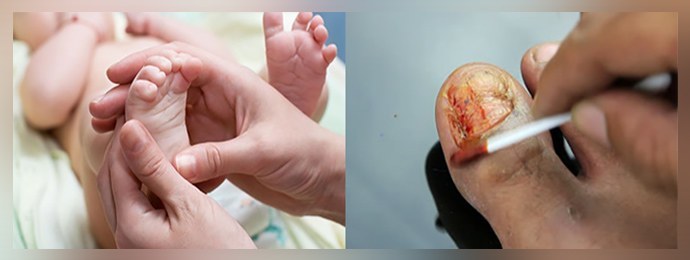
The listed components are applied to the prepared plates after the steaming bath. This increases the effectiveness of home treatments.
There is an opinion that folk remedies do not solve the problem of onychomycosis, but only "drive" the infection inside, contributing to a temporary lull. For this reason, experts insist on a mandatory visit to medical institutions if a child has symptoms of the disease.
Are children of different ages treated the same way?
Newborns and infants under one year old usually get the fungus from their parents. Specialists, in this case, try to limit themselves to the appointment of local antimycotics, so as not to have a systemic effect on the baby's body. At the same time, mom and dad should be treated, as well as relatives in contact with the child, if they have signs of onychomycosis. This is important to exclude a recurrence of the infectious process.
Preschoolers often become infected with the fungus in children's groups and when visiting sports clubs. At this age, specialists often resort to prescribing systemic antimycotics, such as Fluconazole and Griseofulvin. They have a milder effect on the body and quickly cope with the symptoms of pathology along with local treatment. The dosage of medicines is calculated individually - it depends on the child's body weight.
Diagnosis and therapy of nail fungus in schoolchildren and adolescents has little difference from adult patients. At this age, the list of medications is significantly expanding and the treatment of onychomycosis and candidiasis of the nails practically does not cause difficulties.
Proper nutrition
Antifungal diet is aimed at reducing or completely eliminating from the diet food that "likes" the causative agent of the disease. The child's nutrition should be based on the following foods:
- vegetables, mainly root crops: potatoes, carrots, onions, garlic;
- fermented milk products: kefir, fermented baked milk, cottage cheese;
- chicken eggs;
- fruits: unsweetened apples, cranberries, lingonberries, sea buckthorn, grapefruits;
- yeast-free bread, sugar-free baked goods;
- legumes such as beans
- seeds, nuts;
- all types of unsweetened tea.
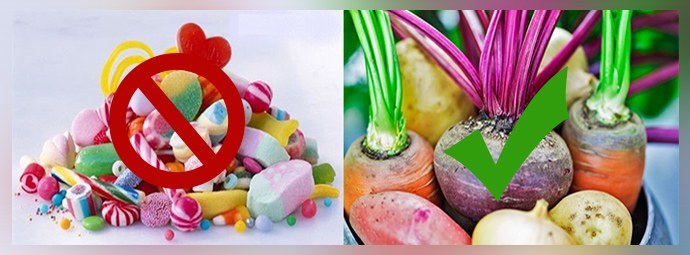
Harmful and heavy food should be discarded during treatment. Additionally, it is recommended to take multivitamin complexes to strengthen the immune system. A similar approach to the fight against onychomycosis will allow you to recover from the disease much faster.
Prophylaxis
To prevent nail fungus, it is necessary to accustom him to hygiene from an early age. They provide for the following points:
- availability of individual care products: towel, washcloth, etc.;
- daily washing of the feet before bedtime, after which the skin must be wiped dry;
- wearing personal footwear that matches the size of your feet;
- regular change of socks, which should be purchased from natural fabric.
Also, children should receive a balanced, high-quality diet with restriction of light carbohydrates. Strengthen immunity through physical education and prevention of viral diseases.
Complications and consequences
Many parents believe that nail fungus cannot cause serious health damage other than a noticeable cosmetic defect. But this is not the case. In fact, this infection is insidious. It is not limited to damage to the nail - its pathogens penetrate the body, spreading through the general blood and lymph flow, affecting its individual systems.
The result of this mechanism of action is a decrease in the protective forces, which leads to frequent colds in the child and deterioration of his health in general. In turn, viral pathologies can cause various complications in the child's body, so nail fungus must be treated.
How to avoid relapses?
If in the past the baby has suffered onychomycosis, in the future it is recommended to make efforts so that the infection does not remind of itself again. Unfortunately, sometimes it takes on a recurrent nature, due to non-compliance with the requirements for the prevention of fungus listed below:
- In addition to the above measures to prevent the development of the disease, parents should teach the child to use exclusively their own things and shoes in everyday life.
- When visiting a public shower or swimming pool, it is forbidden to stand barefoot on the floor surface.
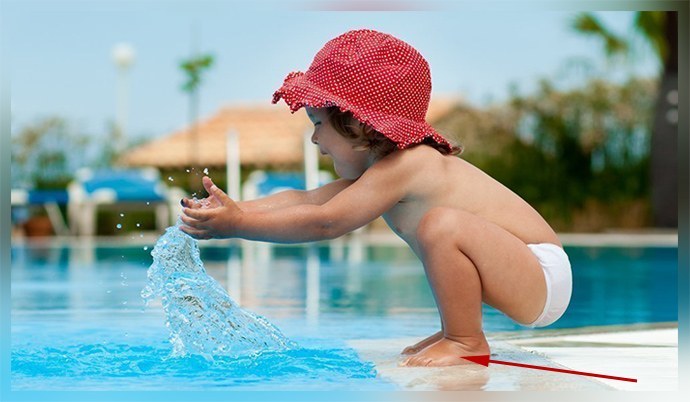
- If the nail is damaged as a result of injury or burns, you need to treat it as soon as possible with any antiseptic.
- And, of course, take care of the baby's immunity, strengthening it with inexpensive folk remedies, balanced nutrition and exercise.
Adhering to the listed rules and familiarizing themselves with the clinical manifestations of the disease, parents can protect their child from recurrence of onychomycosis in the future.
What does Dr. Komarovsky say?
A well-known pediatric pediatrician believes that systemic drugs - tablets and capsules for oral administration - should be prescribed in exceptional cases. Such antimycotics put a serious strain on the child's liver and kidneys, exposing him to unnecessary risk in the form of complications with these organs.
Komarovsky insists that systemic medications should be prescribed to children only on condition that local remedies - ointments and varnishes - did not have the desired effect and the disease progresses. That is, in extreme cases. Also, the specialist discourages parents from self-medication and choosing traditional medicine recipes as the main therapy.
Memo to parents
The resistance of the fungal infection is quite high, so the drug fight against it is delayed for many months. The disease is actively developing, eventually affecting the nails of the child. Parents should not ignore these changes, citing lack of time and money. The problem goes deep inside, and a mild form of onychomycosis sooner or later affects the general functioning of the body, in particular, its immune system.
It is easy to identify nail fungus by their appearance - every attentive mother will notice changes in the color and structure of the plates. From this point on, treatment should be started under the supervision of a specialist and preventive measures should be taken.
Subject to all the doctor's recommendations and an integrated approach to the problem, the child's nail fungus is gradually eliminated. Therapy can be carried out both on an outpatient basis and in a hospital, depending on the degree of onychomycosis. In any case, it is necessary due to many health factors.

